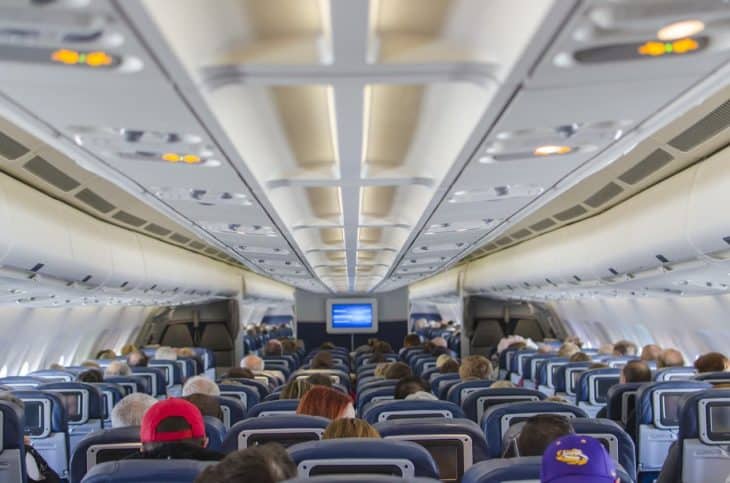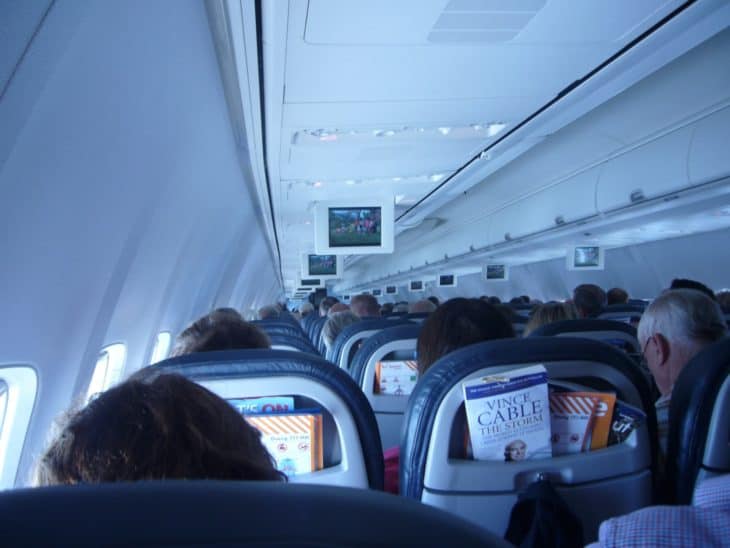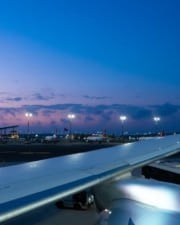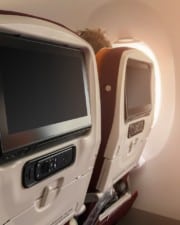Dry eyes, a parched mouth, and reptilian skin are things a person might experience while traveling by plane. This doesn’t just happen to one person; it happens to everyone, but most people just accept it without really asking why this is happening. So why does the air inside an airplane have to be so dry and how best to deal with it?
Why Are Airplanes So Dry?
One factor that contributes to this dryness is the filtration system. It has to circulate the air from outside to ensure the craft’s air stays as clean as possible to keep passengers healthy. The problem is that the air outside is quite dry, which is another factor.
Why is Humidity a Big Deal?
Normally, a person is going to be comfortable with a humidity of about 30 to 65 percent.
That is definitely not the environment people on planes are exposed to. Most people on an aircraft are exposed to humidity levels somewhere between 20 to 30 percent, which is devastating to a person.
Humidity is vital in a number of ways; it helps the skin retain moisture, and without it, the skin feels dry, and that is what happens on a plane. The eyes also go through their own turmoil while up in the skies.
Now, the eyes don’t necessarily rely on humidity to retain moisture. What the eyes do is use the tear film to keep the eyes comfortable. The problem is that while the eyes have their own functioning moisturizer, the low humidity evaporates that moisture quicker than the tear film can work.

This is when the eyes start to become tired, dry, irritated, stinging, and some even get sensitive to light given enough time.
Things get even worse for passengers who are focusing on books or screens, which further contributes to the issue. This is because this focus forces a person to blink less, and that means the film isn’t spread as it should be.
The mouth and nose feel dry because of the environment. The lack of humidity ends up evaporating the moisture one might find in a regular person’s mouth and nose. No matter how much the body fights it, the moisture simply goes away.
Things get worse for a person’s mouth and nose because most folks are not drinking enough water when they are on a plane. Some people skip drinking water because it cost too much money to purchase it.

Others avoid it to reduce the amount of bathroom trips they’ll have to take. Going to the restroom on an airplane, asking passengers to grant passage, dealing with lines, and all that turbulence can easily explain why many people avoid the restroom.
Can a Person Combat the Dryness?
Surely, the burning question that most people might have about this particular issue is if anything could be done to address it. One thing that probably comes to mind for some people is bringing their own water bottles on the flight, but one bottle is not enough.
People should try to hydrate before taking off, making sure to drink a few bottles of water and still take a bottle with them during the flight to keep hydrated.

One thing that can help the skin, throat, and nose is to trap moisture on the skin before taking off. This can be done using moisturizers, but it has to be alcohol-free. Alcohol tends to be drying, and that is definitely not the effect anyone should want during a flight.
The goal is to stay as moisturized as possible, so using natural-based moisturizers that contain jojoba oil or even lard should be quite helpful.
The eyes are another problem that can be addressed. A person can use rewetting drops during the flight as long as all they do is rewet the eyes and not combat redness, which has drying ingredients. Also, it is vital to avoid wearing contacts during the flight that reduces the eyes ability to spread the moisturizing film.

Keeping nasal passages moist on the plane.
Saline sprays can help keep the nose from drying too much. Just a few sprays should be enough to keep the nose as moist as possible.
It is important to keep in mind that these solutions aren’t perfect. The fact of the matter is that the humidity is low, so all one can do is reduce the effects, but the issue is still very much there.
Can’t the Airline Do Something About This?
Technically, planes are already trying to do something about this issue. For one, the aircraft tries to recirculate the moisture that is coming from everyone’s breath, but that is obviously not enough.
One reason air crafts have a hard time dealing with this issue is because humidity could freeze parts of the plane, like the surface of the fuselage. This is something no one wants, and it could cause some corrosion over time.
It should be pointed out that if humidity did get high enough, then passengers might actually experience rain. Of course, rain would end up making the plane heavier than it needs to be, and that’s a safety hazard.

Some of the more modern aircraft are attempting to address these issues in an effective way. For one, a humidifier is being used to help add more moisture to the atmosphere.
Some of the newer planes using humidifiers have to pair it with dehumidifiers that will immediately reduce the humidity levels by the time the moisture starts to get too close to the fuselage and other interior areas.
This approach is working, but it is pretty new, and most planes only reserve this treatment for its pilots and folks who are in first class.
References ▾
Related Posts













